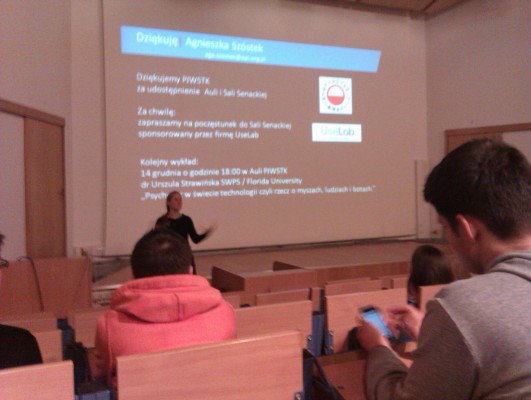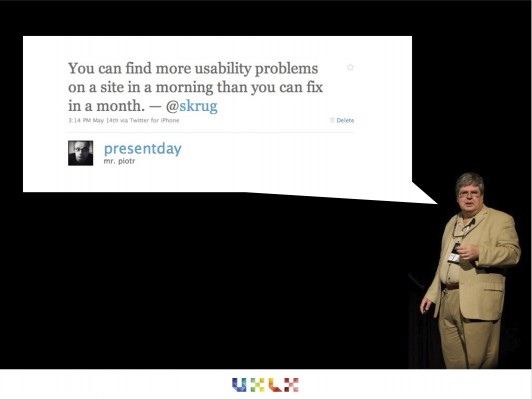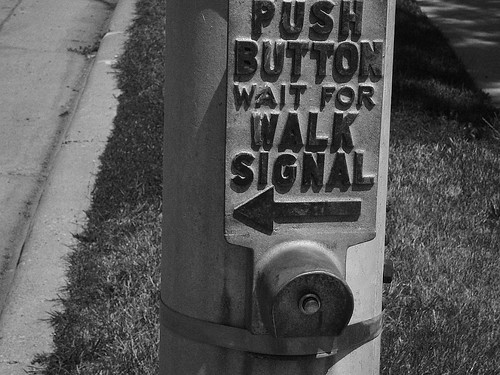Veitia: You have daily opportunities, and there are positive opportunities that you can proactively address, and there are some challenges that come along the line.
We had recently an analysis of a business unit who changed a bit of their model and, for real good reasons, decided to limit the number of letters or paper that went into the mailing for cost reduction purposes. Unfortunately, that compromised the clarity of the message and resulted in 30,000 calls to a call center and a very challenged experience for the consumer and the member. And when you can put on paper the money that was saved on postage and the costs to the call center, and layer on top the customer experience, it becomes very clear, even to the CFO, that it is in our best interest to do things with the member in mind and the customer perspective—that if it wasn’t clear enough for the customer, that mailing would have only created more challenge for us.
So it isn’t daily that that happens. We learn from our mistakes. But also on the proactive end, we are able to influence things like the onboarding first-year process, where one single point on renewal rate improvement can mean millions of dollars to our organization. And if you start looking at usability and center your operations around usability and customer experience, you can find very quickly metrics that will justify more than the necessary investments in what needs to be done.
Archives for November 2010
Wyrwane z kontekstu – User and Customer Experience in a Member Services Organization
Warszawa – spotkanie HCI PJWSTK/SIG CHI Polska
14 grudnia 2010 roku , o godzinie 18.00 w Polsko-Japońskiej Wyższej Szkole Technik Komputerowych, mieszczącej się przy ulicy Koszykowej 86 w Warszawie (mapa dojazdu) rozpocznie się się drugie w tym sezonie spotkanie w ramach koła naukowego HCI.
Wykład “Psychologia w świecie technologii, czyli rzecz o myszach, ludziach i botach” wygłosi dr Urszula Strawińska.
Wstęp wolny.
Cytat dnia – Steve Krug
Wyrwane z kontekstu – User Experience Evaluation in Nokia
The UX process in Nokia is seeking both to design for new experiences and to continuously improve existing solutions. The process consists of two principal strategies: UX target setting and UX improvement.
The process starts by examining user needs and behaviors. We innovate new concepts by reflecting user data with market insights and technological opportunities. We start UX evaluations for the concepts as early as possible, since the earlier we can spot the pros and cons of each concept, the more effective the development process will be. Defining UX targets early in the process helps to set common and measurable directions for both research and development.
Źródło: User Experience Evaluation in Nokia, Virpi Roto, Pekka Ketola, Susan Huotari, UXEM workshop CHI’2008
Prezentacja – Designing Mobile Experiences
Brian Fling, autor książki Mobile Design and Development, wydanej w “zwierzątkowej” serii O’Reilly-ego przygotował dwa lata temu (!) znakomitą prezentację “Designing Mobile Experiences”. Polecam.
Obrazek – Information Architect
Wyrwane z kontekstu – Why focus groups don’t work
The worst way to design a website is to have five smart people in a room drinking lattes. The longer you leave them in the room the worse the design becomes. The next worst way is to have 15 customers in a room drinking lattes. What people say they do and what they actually do are rarely the same thing.
“We hardly ever use focus groups because they just don’t work very well at uncovering user needs,” stated Christine Perfetti when she worked for At User Interface Engineering. “The biggest problem: what users say in a focus group rarely matches what they do in a real-life setting. Users’ opinions about a site or product are very rarely consistent with how they behave when they actually interact with it.”
UXPin
 Dziś World Usability Day, prawdopodobnie więc z tej przyczyny swoją premierę ma interesujący produkt – UX Pin.
Dziś World Usability Day, prawdopodobnie więc z tej przyczyny swoją premierę ma interesujący produkt – UX Pin.
Co to jest? Trywialnie mówiąc – zestaw kilkuset samoprzylepnych elementów, służących do prototypowania na papierze.
Dlaczego UX Pin wydaje mi się wartościowy? Bo wydaje się pozwalać na proste i estetyczne projektowanie, które można pokazać klientowi bez poczucia obciachu.
Interesującym jest, że projekt powstał w Polsce, natomiast widać że jest skierowany raczej do zagranicznego odbiorcy.
Cena zestawu: ok. 20$ + koszty wysyłki.
Obrazek – Wider view of content strategy

Source: http://johnnyholland.org/2010/11/05/content-strategy-no-longer-just-the-preserve-of-the-web-professional/
Content strategy is concerned with the systems and processes for structuring, organising, managing and creating the content. As such it is closest to the traditional user experience professional.
Editorial strategy is then concerned with what to say and to whom. It covers messaging, themes , topics, points of view and how they are expressed. As such it is closest to the writers and search specialists.
Content marketing covers how to drive conversation around content. How to use it to attract attention, engagement and participation. And as such closer is to the traditional communication and marketing professional.
Źródło: Content Strategy: no longer just the preserve of the web professional, Johnny Holland
Wyrwane z kontekstu – Location-based service users are more often young and mobile
- 7% of adults who go online with their mobile phone use a location-based service.
- 8% of online adults ages 18-29 use location-based services, significantly more than online adults in any other age group.
- 10% of online Hispanics use these services – significantly more than online whites (3%) or online blacks (5%).
- 6% of online men use a location-based service such as Foursquare or Gowalla, compared with 3% of online women.
Źródło: Location-based service users are more often young and mobile, Pew Internet & American Life Project
Placebo buttons
A placebo button, also called an idiot button, is a push-button with apparent functionality that actually has no effect when pressed, analogous to a placebo. In other cases, a control like a thermostat may not be connected.
Although non-functional, the buttons can give the user an illusion of control. In some cases the button may have been functional, but may have failed or been disabled during installation or maintenance. Only in relatively rare cases will the button have been deliberately designed to do nothing.
In many cases, a button may not appear to do something, but in fact cause behavior that is not immediately apparent; this can give the appearance of it being a placebo button.
Źródła:
Spotkanie Warszawa – koło HCI na PJWSTK
Już w przyszłym tygodniu, 16-go listopada 2010 o godz. 18:00, w ramach World Usability Day 2010 odbędzie się spotkanie Koła naukowego HCI działającego przy Polsko-Japońskiej Wyższej Szkole Technik Komputerowych w Warszawie.









Recent Comments